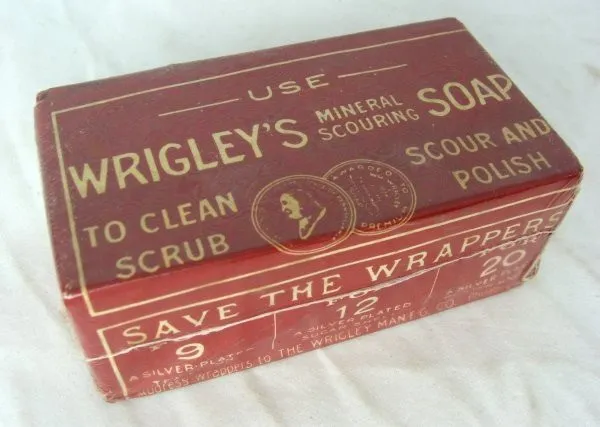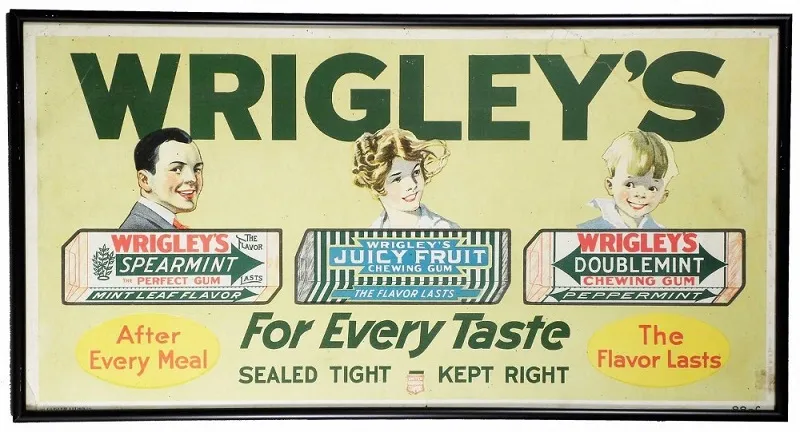How to create a new category: The Wrigley case study
One recent morning, I found myself chewing away furiously on two pieces of gum. Nothing unusual there – I have been chewing gum every morning at the gym for the best part of two years now.
Whenever someone asks me why I chew gum while working out, I tell them that chewing gum helps me focus and works my jaw. While this might be true, the real reason that got me started was watching Arnold Schwarzenegger chewing away on his workouts like a total badass.

Image credit: Shutterstock
But when I reflect upon this, I have to ask myself: Do I really need chewing gum? In fact, does anyone need chewing gum?
Like many of you reading this, I couldn’t think of a situation where we would be much worse off without chewing gum.
How is it then that chewing gum has become one of the most ubiquitous FMCG product categories, one that today supports multiple market leaders, each of which do billions of dollars in revenues?
To find an explanation for this anomaly, I decided to travel back in time to analyse the beginnings of the market leader of this curious category.
The Wrigley Company, by far the largest gum company in the world, with a 35 per cent market share, also takes the credit for being the forerunner in making chewing gum a mainstream product category today. I hadn’t known it, but Orbit, my preferred chewing gum brand, is part of the Wrigley Company.
The creation and growth of the Wrigley Company make for a very interesting story, one that is full of lessons that continue to be relevant today.
Test for product market fit
Since I wrote my post on product-market fit, many entrepreneurs and readers have asked me how it might be possible for early-stage startups to test for it.
It turns out that William Wrigley Jr., the Founder of the Wrigley Company, had figured out the process over a hundred years ago.
When William started the company in 1891, it was with $32 and the idea to sell soap, the soap he called Wrigley’s Scouring Soap.

The soap that created the gum industry(Image credit)
The soap that created the gum industry
However, he chose a customer acquisition strategy that a lot of new-age businesses could learn from. He offered merchants free baking powder as an extra incentive for them to carry his soap. When he found the baking powder to be more powerful than the soap, he pivoted to making baking powder the central offering of his business.
But it didn’t end there.
Upon switching to baking powder, Wrigley began offering his customers two packages of chewing gum for each can of baking powder they purchased. Once again, the add-on proved to be more popular than the base product and the gum industry has never been the same since.
Takeaways
- Always test for product-market fit with customers to verify your product/service’s market potential.
- There is always room to pivot or switch to a superior business model or category.
Expand the target market
While chewing gum might appear like a product created to appease modern fads, there is evidence to support that ancient cultures have been chewing birch bark tar as far back as 9,000 years ago. The Mayan and Aztec civilizations chewed a substance called chicle, derived from the sapodilla tree, as a way to quench thirst or fight hunger.
However, there was something quaint about who could actually chew chicle.
As Jennifer P. Mathews observed in her book “Chicle: The Chewing Gum of the Americas”
Only kids and single women were allowed to chew it in public. Married women and widows could chew it privately to freshen their breath, while men could chew it in secret to clean their teeth.
Somehow, the stereotype that only women should chew gum continued right up to the end of the 19th Century in America.
Wrigley, sensing that a much larger market could be unlocked by marketing chewing gum to other consumer segments, introduced a new range of products, beginning with Sweet Sixteen Orange and Lotta Gum, brands that were targeted at the youth.
In 1893, during an economic depression, Wrigley launched Spearmint and Juicy Fruit, iconic brands that have immortalised Wrigley’s mind-share ever since.
Chewing gum had suddenly become a product with mass-market relevance and appeal.

Takeaways
- If at first the market size for the new category seems small, evaluate the possibility of extending your business proposition to other customer segments.
Support your partners
In 1899, Wrigley was invited to join six other chewing gum manufacturers who were banding together to form a trust. He refused, and soon found himself engaged in a nearly ruinous competition with them.
In spite of being celebrated, competition and confrontation rarely yield great success, as history has shown time and time again.
In a precursor to what can now be appreciated as a move to solidify his distribution channels (Perhaps the most significant determinant of an FMCG company’s success), Wrigley gave his dealers free coffee grinders, cash registers, scales, lamps, and other appliances.
Takeaways
- Identify the keys to success in your business and nurture the relationships with all the stakeholders involved.
Believe in yourself
The financial recession of 1907 showcased what undoubtedly was Wrigley’s greatest demonstration of determination and tactical leadership.
Wrigley mortgaged everything he owned to borrow $2,50,000 and purchase deeply-discounted advertising space that would otherwise have cost him $1.5 million.
With his competitors shying away from spending on advertising during the recession, he launched a massive advertising campaign with his now famous credo,
Tell 'em quick and tell 'em often.
The campaign also proved hugely successful. In a few weeks, Wrigley had grown its market from the Midwest to the entire United States. By 1910, as sales increased from $1,70,000 to more than $3 million, Wrigley’s Spearmint became the largest selling brand in the nation.
Takeaways
- If you believe in yourself and your vision, ignore the naysayers and make the tough decisions.
- Timing the market might call for doing exactly the opposite of what the competition is doing.
So the next time you trivialise a business idea, model or product just because it is creating a new category, take a moment to think about the beginnings of the (not so) humble chewing gum.







